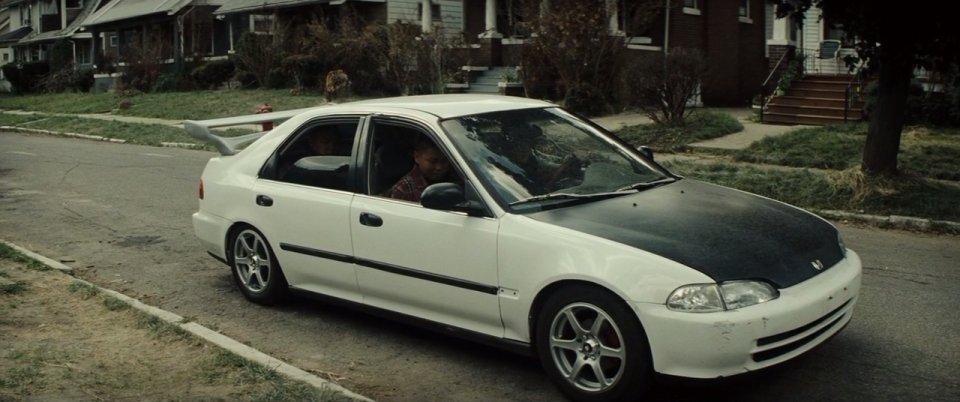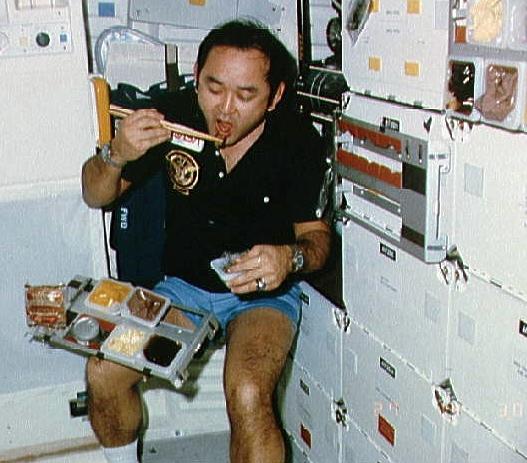
So I will start off my rock posts by looking at the Honda Civic. I guess one could say that the Honda Civic is a love it or hate it kind of car. They have a reputation for being “ricer burners”, this was one of the terms that the rival gang in Gran Torino used. They are also extremely reliable and economic. Some Civic’s from the late 80′s and early 90′s still get better gas mileage than a Prius. For somebody looking to get into modifying cars, they are easy to work on and parts come relatively cheap. We saw one in Gran Torino; it was driven by Thao’s cousin Spider. It had a spoiler on the trunk, the rear of the car sits much lower than the front (implying blown shocks or cut springs), and it has a black hood. This in itself is a stereotype of Honda Civics, not to mention that it was driven by an Asian American gang. But to really understand all of this, I must go deeper.
There has been a history of tension between American car companies and their employees, and Japanese car companies and the people who support them. With the fear of Asian Americans taking the jobs from the middle class white workers, the tension could become quite deep seated. Not only were the Ford, GM, Chevy, etc. employees still harboring anti-Asian beliefs, but the opposing Japanese car companies took more business from the American companies as well. While the Japanese cars were gaining popularity due to their efficiency and affordability, those who backed the American companies continued to protest the Japanese car companies. Honda was a leading car company for a long portion of time and their flagship model was the Honda Civic. Eventually, Civics could be seen in any city around the country. This popularity acted as another physical manifestation of the idea that the “Oriental pollution” was coming to the states. Civics, as well as pretty much any car made by Japanese companies, became a vessel for these racist beliefs. With the emergence of the term “ricer” spawned another struggle for Asian Americans.


Above are two memes that show an example of some typical “ricer” jokes. The term goes hand in hand with people who modify their cars in ways that seem useless and are incorrect. The Camaro, which is a popular American muscle car, in the first picture is equipped with a large, gaudy body kit and Lamborghini style doors. These mods do not make a car perform any better and are simply exterior modifications. So it is fairly easy to see why somebody might make fun of somebody else for building a car in a way that they feel is amateur. But, that is only scratching the surface. The word “ricer” does not just mean that a car is amateur, it has quite the racist connection as well.
Rice is the base word of the term “ricer” and it is used because the cars are Japanese, and everybody in Asia eats rice; right? And if you are Asian American, you must drive a “rice burner” right? Because that’s all you people do is farm rice and drive stupid cars, right? So now anything related to rice is funny, right? Rice burner, ricer, ricer boy, rice rocket? That is what the term carries along with it. It is another outlet for racism and it is even equipped with a “shield” meaning in case anybody tries to bring that up.
So what does somebody mean when they say “ricer”?
When somebody is calling out a car as a “ricer”, they are saying multiple things. First off, they are looking down on the car and its driver because it is an import, not domestic. More specifically, that it is imported from Japan most likely. They are expressing their disapproval of the car, the driver, and how the driver modified the car. But, what kind of driver is it? The automatic assumption is Asian and can even be linked to gangsters, hoodlums, or delinquents. So the word is used in many different situations and carries several meanings. It also has a circular nature to it. For example, if an Asian-American is seen driving a Toyota, somebody might assume that person driving the Toyota must race since they look to be Asian and are driving a “ricer”, even if the car is not modified and the person has no interest in racing.
This isn’t the first time food has been used as a racial slur but since it is linked to cars, it has the perfect cover to allow the continued use of the word. Now, people within any car scene are usually familiar with the term ricer. Some people even try to claim that they are not racist by distinctly saying that when they say “ricer” they are referring to a poorly built car, not a Japanese car. There is even a whole movement that has been started called Rice Killers and it’s main goal is “uniting imports and domestics against rice!”. It is backed by a forum and has grown to a point where they are making profit by setting up car events and selling merchandise. It seems that they forgot to realize that they are still using the term “ricer” which is demeaning in and of itself. In a failed attempt to end the dispute between imports and domestics, Rice Killers has done nothing but promote the use of the word and all the others that go along with it.
Click here to view the embedded video.
So I guess if you take a word with a racist meaning and background, and claim that it is actually just an acronym for something not racist, it is totally okay to continue using the word….. R.I.C.E. isn’t any different than rice; they both say rice. If somebody were to come up with an acronym for O.R.I.E.N.T.A.L. it would not get rid of the word’s history, intent, or meaning. Rice is another way to create distance and promote that Asian is synonymous with alien. He NATURALLY thought that “ricer” meant a Japanese car. And yet, he thinks that it’s possible to take the same word, create an acronym out of it, and say that it means idiot. It seems to me that it is just another method to link a negative word like idiot to the list of other things that “ricer” connects to. It links things like poverty, gangs, and stupidity to Asian Americans and tries to hide behind an “innocent” target of ugly cars.
The last meme shows a picture of a group of Mustangs, another iconic American muscle car, rolling down the highway. The caption says FEAR …. we can smell it ricer boy. This can literally be seen as a group of big, strong American men hunting down a small, weak Asian boy. As disgusting as that is, the word “ricer” continues to have some sort of immunity. While movies like the popular Fast and Furious series can promote the Japanese car culture here in America, they can also perpetuate the use of “ricer” even further.
I hope that this has been an informative post. I am open to any criticism towards my post, writing style, content, anything you can think of. I will end it with a few pictures of Civics modified to different tastes. Unlike the hatred for Civics in America, in Japan there are entire racing series based around Civics alone.



















